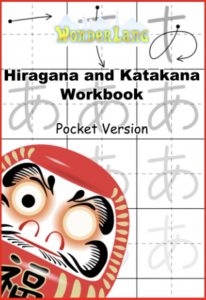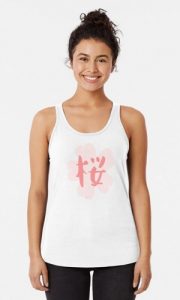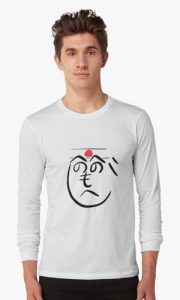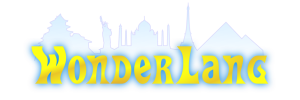Hello,
This post will introduce the two kana syllabaries: hiragana and katakana.
| Amazon.com |  |
Amazon.ca |
First, if you don’t have any idea of what kana and romaji are, I advise you to quickly go through my previous posts: The Japanese Writing System, and Romaji.
Note: I will use romaji transcription surrounded by brackets (such as [ka] for instance) to figure kana pronunciation. If you have audio available, click on the pronunciation between brackets to hear the pronunciation.
Introduction
This post will present you all the characters from the hiragana and katakana syllabaries. The point is to give you a clear view of the extent of these alphabets. This lesson will be followed by 20 lessons that will guide you step by step in learning these characters, and one lesson to give you some advices on how to master them. Let’s go!
Kana
As discussed earlier, kana is composed of two syllabaries: hiragana and katakana. Learning these syllabaries is essential for anyone wanting to learn reading Japanese.
Hiragana is the first alphabet that Japanese have to learn at school. It serves as a basis to learn katakana, and then kanji, and is present in everyday Japanese words, in grammatical structures and verbal forms.
Katakana on its side is dedicated to more specific uses such as transcription of foreign words and names, or to highlight some words in a written document (same as the use of italic or bold fonts in English for instance). Japanese children learn katakana once they start mastering hiragana.
The syllabaries both provide characters for the 46 basic Japanese syllables. For instance the hiragana あ and the katakana ア both represent the syllable [a]. Some of these characters pronunciation can be altered by the use of diacritic signs ( ゙ and ゚) . The pronunciation of て [te] is changed by the addition of ゙ (the dakuten, or tenten) becoming で [de]. Additionally some characters can also be put together to form new syllables. For example し [shi] with a small よ [yo] will become しょ [sho].
Now lets have a look at these two syllabaries.
Hiragana
The table below provides the list of the 46 basic hiragana characters.
| あ [a] | い [i] | う [u] | え [e] | お [o] |
| か [ka] | き [ki] | く [ku] | け [ke] | こ [ko] |
| さ [sa] | し [shi] | す [su] | せ [se] | そ [so] |
| た [ta] | ち [chi] | つ [tsu] | て [te] | と [to] |
| な [na] | に [ni] | ぬ [nu] | ね [ne] | の [no] |
| は [ha] | ひ [hi] | ふ [fu] | へ [he] | ほ [ho] |
| ま [ma] | み [mi] | む [mu] | め [me] | も [mo] |
| や [ya] | ゆ [yu] | よ [yo] | ||
| ら [ra] | り [ri] | る [ru] | れ [re] | ろ [ro] |
| わ [wa] | を [wo] | |||
| ん [n] |
This table, called gojūon (meaning 50 sounds – initially hiragana and katakana both contained 50 characaters, but along time the use of some of them: [yi], [ye], [wi], [wu] and [we], has been deprecated or abandonned), is organized as follows: each column corresponds to a vowel ([a], [i], [u], [e] or [o]), and each row to a consonant ([-], [k], [s], [t], [n], [h], [m], [y], [r] and [w]). The last row with ん is an exception and has been added recently to the syllabary.
As mentionned earlier, some of these characters have variations induced by the use of diacritic signs (the dakuten ゙ and the handakuten ゚) which alterate the way the character is pronounced (voiced and semi-voiced):
| が [ga] | ぎ [gi] | ぐ [gu] | げ [ge] | ご [go] |
| ざ [za] | じ [ji] | ず [zu] | ぜ [ze] | ぞ [zo] |
| だ [da] | ぢ [ji] | づ [zu] | で [de] | ど [do] |
| ば [ba] | び [bi] | ぶ [bu] | べ [be] | ぼ [bo] |
| ぱ [pa] | ぴ [pi] | ぷ [pu] | ぺ [pe] | ぽ [po] |
And finally there exists some syllables depicted by the use of multiple characters, the second being half-width character ゃ,ゅ or ょ:
| きゃ [kya] | きゅ [kyu] | きょ [kyo] | ||
| ぎゃ [gya] | ぎゅ [gyu] | ぎょ [gyo] | ||
| しゃ [sha] | しゅ [shu] | しょ [sho] | ||
| じゃ [ja] | じゅ [ju] | じょ [jo] | ||
| ちゃ [cha] | ちゅ [chu] | ちょ [cho] | ||
| にゃ [nya] | にゅ [nyu] | にょ [nyo] | ||
| ひゃ [hya] | ひゅ [hyu] | ひょ [hyo] | ||
| びゃ [bya] | びゅ [byu] | びょ [byo] | ||
| ぴゃ [pya] | ぴゅ [pyu] | ぴょ [pyo] | ||
| みゃ [mya] | みゅ [myu] | みょ [myo] | ||
| りゃ [rya] | りゅ [ryu] | りょ [ryo] |
All of these tables and characters can look intriguing but don’t worry, you will have mastered most of them in a few weeks.
Katakana
The table below provides the list of the 46 basic katakana characters.
| ア [A] | イ [I] | ウ [U] | エ [E] | オ [O] |
| カ [KA] | キ [KI] | ク [KU] | ケ [KE] | コ [KO] |
| サ [SA] | シ [SHI] | ス [SU] | セ [SE] | ソ [SO] |
| タ [TA] | チ [CHI] | ツ [TSU] | テ [TE] | ト [TO] |
| ナ [NA] | ニ [NI] | ヌ [NU] | ネ [NE] | ノ [NO] |
| ハ [HA] | ヒ [HI] | フ [FU] | ヘ [HE] | ホ [HO] |
| マ [MA] | ミ [MI] | ム [MU] | メ [ME] | モ [MO] |
| ヤ [YA] | ユ [YU] | ヨ [YO] | ||
| ラ [RA] | リ [RI] | ル [RU] | レ [RE] | ロ [RO] |
| ワ [WA] | ヲ [WO] | |||
| ン [N] |
In the same manner as hiragana, some katakana characters can be altered by the use of the dakuten and handakuten diacritic signs:
| ガ [GA] | ギ [GI] | グ [GU] | ゲ [GE] | ゴ [GO] |
| ザ [ZA] | ジ [JI] | ズ [ZU] | ゼ [ZE] | ゾ [ZO] |
| ダ [DA] | ヂ [DI] | ヅ [ZU] | デ [DE] | ド [DO] |
| バ [BA] | ビ [BI] | ブ [BU] | ベ [BE] | ボ [BO] |
| パ [PA] | ピ [PI] | プ [PU] | ペ [PE] | ポ [PO] |
And here as well there we have the same composite syllables:
| キャ [KYA] | キュ [KYU] | キョ [KYO] | ||
| ギャ [GYA] | ギュ [GYU] | ギョ [GYO] | ||
| シャ [SHA] | シュ [SHU] | ショ [SHO] | ||
| ジャ [JA] | ジュ [JU] | ジョ [JO] | ||
| チャ [CHA] | チュ [CHU] | チョ [CHO] | ||
| ニャ [NYA] | ニュ [NYU] | ニョ [NYO] | ||
| ヒャ [HYA] | ヒュ [HYU] | ヒョ [HYO] | ||
| ビャ [BYA] | ビュ [BYU] | ビョ [BYO] | ||
| ピャ [PYA] | ピュ [PYU] | ピョ [PYO] | ||
| ミャ [MYA] | ミュ [MYU] | ミョ [MYO] | ||
| リャ [RYA] | リュ [RYU] | リョ [RYO] |
One particularity, though: as katakana is used to translate foreign words, there also exist some specific characters used to represent sounds that do not exist in the Japanese language:
| ウィ for [WI] | ウ for [WU] | ウェ for [WE] | ウォ for [WO] | |
| ヴァ for [VA] | ヴィ for [VI] | ヴ for [VU] | ヴェ for [VE] | ヴォ for [FO] |
| シェ for [SHE] | ||||
| ジェ for [JE] | ||||
| ズィ for [DI, ZI] | ||||
| チェ for [CHE] | ||||
| ツァ for [TSA] | ツィ for [TSI] | ツェ for [TSE] | ツォ for [TSO] | |
| ティ for [TI] | トゥ for [TU] | |||
| ディ for [DI] | ヂュ for [DU] | |||
| ファ for [FA] | フィ for [FI] | フェ for [FE] | フォ pour [FO] | |
| フュ for [FYU] |
Furigana
You may also sometimes find references to a third kana syllabary, called furigana. In fact furigana is not a syllabary in itself, but it is a mean to indicate the pronunciation of some characters (mainly kanji, but you can also find it for katakana) using hiragana or katakana; or even sometimes roman alphabet.
Here is an example:
私はケビンです。
Well, here it is for the presentation of the kana syllabaries. Now, its time to start learning them:
- Learning Hiragana and Katakana. This article presents the elements to which you will have to pay attention when learning hiragana and katakana.
- Hiragana lesson 1: a, i, u, e, o
- Hiragana lesson 2: ka, ki, ku, ke, ko
- Hiragana lesson 3: sa, shi, su, se, so
- Hiragana lesson 4: ta, chi, tsu, te, to
- Hiragana lesson 5: na, ni, nu, ne, no
- Hiragana lesson 6: ha, hi, fu, he, ho
- Hiragana lesson 7: ma, mi, mu, me, mo
- Hiragana lesson 8: ya, yu, yo, and halfwidth -ya, -yu, -yo and tsu-
- Hiragana lesson 9: ra, ri, ru, re, ro and the handakuten ◌゜ derivates
- Hiragana lesson 10: wa, wo, n and the dakuten ◌゛ derivates
- Katakana lesson 1: A, I, U, E, O and halfwidth A, I, U, E, O
- Katakana lesson 2: KA, KI, KU, KE, KO (+ dakuten derivates)
- Katakana lesson 3: SA, SHI, SU, SE, SO (+ dakuten derivates)
- Katakana lesson 4: TA, CHI, TSU, TE, TO (+ dakuten derivates) and halfwidth TSU
- Katakana lesson 5: NA, NI, NU, NE, NO
- Katakana lesson 6: HA, HI, FU, HE, HO (+ dakuten and handakuten derivates)
- Katakana lesson 7: MA, MI, MU, ME, MO
- Katakana lesson 8: YA, YU, YO and halfwidth -YA, -YU, -YO
- Katakana lesson 9: RA, RI, RU, RE, RO
- Katakana lesson 10: WA, WO, N and extra sounds
- The Kana: One step further with hiragana and katakana: long vowels, doubled consonants and okurigana
- Mastering kana
Stéphane
 |
 |
 |
 |
 |
|||
